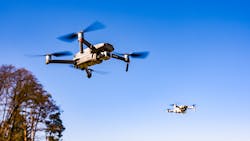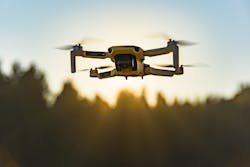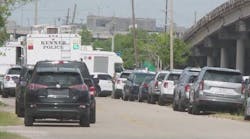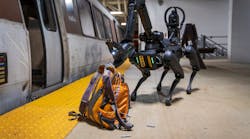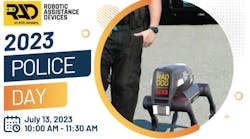It was going on 30 or more years ago now that the word “drone” became commonly known and used. At the time, it was due to the use of remotely controlled flying craft used by the military to perform recon assignments or to deliver munitions against enemy targets. For quite a number of years thereafter, people read “drone” and thought only of such military aircraft. Since that time, society has realized that a drone isn’t just a Predator piloted by military personnel strictly for military usage. Heck, today you can walk into any Walmart and buy a drone for your 6-year-old to fly.
For the purposes of this article, we’re going to define “drone” according to the dictionary and then in the common use—and how we’ll use it.
Drone—according to Dictionary.com—is an unmanned aircraft or ship that can navigate autonomously, without human control or beyond line of sight; any unmanned aircraft or ship that is guided remotely.
Drone aircraft: a pilotless radio-controlled aircraft used for reconnaissance or bombing.
For the purposes of this article, we will refer to drones as the latter: pilotless radio-controlled aircraft. But, keeping that in mind, in previous articles we have referred to all remote-controlled vehicles as drones: boats, cars and aircraft among them.
The uses for a drone are often limited only by your imagination, the capabilities of the drone being used, and the weather conditions. So many industries and professions today use drones that it’s impossible to list them all. When equipped with a down-looking camera, the drone can give you an aerial view of the flown-over area. Depending on the camera, the drone can transmit back real-time video and view, or it can take pictures and then you download those after the fact for analysis...or it can do both. Even that simple capability can be of great value for any team gathering data about a given area. Let’s take a look at a few examples of drone use in today’s law enforcement world.Search & Rescue
About 15 years ago, my youngest daughter got lost in the woods. That might sound like the beginning of a bad fairytale, but it was a fall evening and the temperatures were dropping quickly. The area she and her friend had been hiking in opened into several hundred acres of forest and there was the real possibility that they could be lost for days if they weren’t found quickly. When the local sheriff’s office was notified, the Special Operations Team was put on alert—because search and rescue fell to them. They alerted the nearby Coast Guard base because they anticipated a possible need for a helicopter. Why? Because from even 1,000 feet up, with a down-looking infra-red camera, seeing the heat signatures of two lost girls in the dark would be a quick way to find them.
Thankfully the girls walked out of the woods before the helicopter was spun up, but the example is perfect for how a drone could save time and money. Flying a helicopter isn’t cheap. The manpower, fuel and maintenance all have costs attached. Compare that to the cost of a single SWAT guy putting a drone up and flying it around—and the savings are obvious. Additionally, there is the benefit of local deployment. Rather than having to wait for the helicopter to get on scene, the drone is deployed from the last known location of the missing person(s) as quickly as the operator can get on scene. Usually that’s a bit faster.
Thanks to the wonders of technology, that drone can be equipped with the same down-looking IR capabilities, fly to sufficient heights and transmit real-time images back to the team. Further, the drone can fly places a helicopter can’t—such as tight ravines or canyons—and many of the cameras put on drones today are “steerable,” meaning you can direct the camera to see different directions than just down.Tactical Recon
Some criminals aren’t as stupid as their chosen “profession” might make them seem to be. Instead of hiding amidst clutter and either thick woods or an inner city, they choose to “hide” in plain site: out in the middle of a farm or other open area. Such can make approaching for recon without being noticed (or shot at) a difficult challenge. Enter the drone.
Flown by a trained and licensed SWAT pilot, with the proper camera(s) attached, the drone can approach with near silence and some high enough up that they’re hard to see—if they can be seen at all—from the ground. They take the necessary photos, gathering the valuable intel, and then are returned “to base.” As the drone is returning, the team command can already be viewing the images and forming the plan of approach, assault, etc.
In hostage negotiation situations, drones can also be used to gain intel. A drone can penetrate a given area and scout to find out the specific location where hostages are being held, etc.
Drones can be used to search for booby-traps or other challenges a team might experience as they make an approach. The minutes spent flying a drone through a given space to perform recon might save the team hours of slow and deliberate work through that same space. (NOTE: That’s NOT to say that anything should be taken for granted and the drone cannot replace the knowledge and experience that goes with human eyes-on).
Conclusion
The technological reality of today is that drones can provide law enforcement a tool for performing what used to be high-risk or high-cost (or both) search and recon. There is a cost to purchase and a cost to train the operator. There are legal controls on how and when the drone can be used for evidentiary searches. There can be restrictions on how high you can fly your drone (just ask the Secret Service anywhere near the White House). But once your agency has invested the initial time and cost, the drone can pay for itself several times over.
